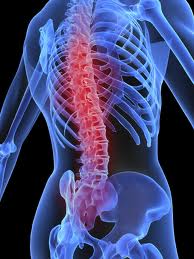
Relieving Chronic Pain with Neuromodulation Therapy
Neuromodulation for chronic pain is a relatively new therapy that can greatly alleviate discomfort for people suffering with chronic pain.
Neuromodulation, also referred to as neurostimulation, works through implantable devices that deliver gentle electrical impulses to the spinal cord or peripheral nerves. These impulses block pain signals from reaching the brain. Consequently, instead of experiencing chronic painful sensations, patients feel relief or a soothing tingling or numbness in the affected area. Most importantly, with this precise technology, we can target the exact areas of pain.
Types of Neuromodulation
There are several types of stimulation. Some of the differences among them include where the device is located, the device’s waveform, and its intensity.
- Spinal cord stimulation (SCS) treats painful sensations at the back, neck, legs, and arms by blocking pain at the spinal cord. This type of therapy can capture larger painful areas. Advances in this technology have made it possible to treat different pain pathways and allow for different waveforms to be tailored to each patient.
- Dorsal root ganglion (DRG) neuromodulation targets pain in a specific location, such as the foot, ankle, or knee. It’s appropriate for patients who have had surgery in those areas, and for those who don’t want joint replacement surgery. It also may help those with chronic abdominal pain after hernia repair surgery, chronic pelvic pain, or painful peripheral neuropathy (pain that most often occurs in the hands or feet due to nerve damage).
- Peripheral nerve stimulation (PNS) targets a specific nerve to relieve pain locally. This can be helpful in treating post-stroke shoulder pain or nerve damage after an arm or leg injury.
Can Neuromodulation Help You?
Ideal candidates for neuromodulation are those who have tried medications, injections, or surgery for chronic pain (defined as pain for more than three months) without relief. The treatment can also relieve pain for a variety of conditions, particularly:
- Chronic regional pain syndrome (CRPS)
- Post-laminectomy pain syndrome, known as “failed back syndrome”
- Chronic neuropathic pain, such as nerve pain, sciatica, or diabetic nerve pain
Benefits of Neuromodulation Therapy for Chronic Pain
Treatment with neuromodulation devices involves minimally invasive surgery, and patients are up and walking the same day. Additionally, neuromodulation is unique in that patients are able to trial the therapy first to determine if it will work for them. Therefore, before proceeding with device implantation, we look for at least a 50 percent reduction in pain along with functional improvements during the trial. Anticipated improvements include better sleep and an increased ability to walk and perform activities.
In addition to decreasing pain, neuromodulation may also reduce the need for chronic steroids and opioid pain medications. While it’s not a “cure all,” it is a powerful option in our pain management toolkit that can provide meaningful pain relief and improved function.
 Dr. Ali Valimahomed is a pain management physician who is board certified in interventional pain medicine and also Physical Medicine & Rehabilitation. He completed his residency at Cornell and Columbia, after which he finished his Pain Medicine Fellowship at Harvard.
Dr. Ali Valimahomed is a pain management physician who is board certified in interventional pain medicine and also Physical Medicine & Rehabilitation. He completed his residency at Cornell and Columbia, after which he finished his Pain Medicine Fellowship at Harvard.







